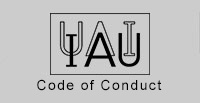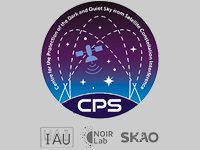- News
- Science
- Scientific Bodies
- Divisions
- Commissions
- Commission A1 Structure
- Commission A2 Structure
- Commission A3 Structure
- Commission A4 Structure
- Commission B1 Structure
- Commission B2 Structure
- Commission B3 Structure
- Commission B4 Structure
- Commission B5 Structure
- Commission B6 Structure
- Commission B7 Structure
- Commission C1 Structure
- Commission C2 Structure
- Commission C3 Structure
- Commission C4 Structure
- Commission C5 Structure
- Commission D1 Structure
- Commission E1 Structure
- Commission E2 Structure
- Commission E3 Structure
- Commission E4 Structure
- Commission F1 Structure
- Commission F2 Structure
- Commission F3 Structure
- Commission F4 Structure
- Commission G1 Structure
- Commission G2 Structure
- Commission G3 Structure
- Commission G4 Structure
- Commission G5 Structure
- Commission H1 Structure
- Commission H2 Structure
- Commission H3 Structure
- Commission H4 Structure
- Commission J1 Structure
- Commission J2 Structure
- Commission J3 Structure
- Commission X1 Structure
- Commission X2 Structure
- Past Commission Organising Committees
- Working Groups
- Centres
- Scientific Meetings
- Rules & Guidelines
- General Assemblies
- Meeting Proposals
- Future IAU Meetings
- General Assemblies
- EC Meetings
- Officers' Meetings
- Regional Meetings
- Symposia
- Focus Meetings
- Institutional Meetings
- IAU Offices Meetings
- IAU-Sponsored Meetings
- Letters of Intent submitted for 2024
- Letters of Intent submitted for 2023
- Letters of Intent submitted for 2022
- Letters of Intent submitted for 2021
- Letters of Intent submitted for 2020
- Past IAU Meetings
- Templates
- Other Meetings
- Grants & Prizes
- Scientific Bodies
- Publications
- IAU Publications
- IAU Strategic Plan
- Symposia
- WGSBN Bulletins
- Regional Meetings
- Information Bulletins/Catalyst
- E-Newsletters
- Focus Meetings
- Transactions A
- Transactions B
- Related Publications
- GA Newspapers
- CAPjournal
- IAU Books
- Brochures
- IAU Offices
- WG Reports
- Commission Reports
- Division Reports
- Past IAU Publications
- Rules, Guidelines and Instructions for Proceedings
- Publishers
- IAU Publications
- Administration
- About the IAU
- Statutes & Rules
- IAU Policies
- IAU Executive Bodies
- IAU Secretariat
- Resolutions
- Members Administration
- Administrative Dates & Deadlines
- International Organisations Relations
- Donate to the IAU
- Training in Astronomy
- Astronomy for Education
- Astronomy for Development
- Astronomy for the Public
- Office for Astronomy Outreach
- FAQ
- Themes
- Satellite Constellations
- Astronomy in Everyday Life
- How to Report a Discovery
- Careers in Astronomy
- Defining our Place in the Cosmos
- The Constellations
- Light Pollution
- Measuring the Universe
- Near Earth Objects
- How to Participate in Astronomy Research
- Naming of Astronomical Objects
- Naming of Exoplanets
- Buying Star Names
- Naming Stars
- Pluto and the Solar System
- IAU Member Statistics
- Our Moon: the Moon
- Meteors & Meteorites: The IAU Definitions of Meteor Terms
- UNESCO-IAU Portal to the Heritage of Astronomy
- Social Media
- Past Events
- Call for Online Resources
- Astronomy@Home Awards
- Contact
Past Inter-Division D-G-H-J Commission Galaxy Spectral Energy Distributions for 2021-2024
Parent Divisions:
D,
G,
H,
J
In the present era of ample access to observations covering the whole spectral range – from Gamma and X-ray wavelengths to radio wavelengths – it is possible to have a panchromatic view of galaxies and to derive their panchromatic SEDs. A SED provides a concise “summary” of a galaxy content. However, underneath this brevity, a wide variety of physical processes are at play that shape these SEDs.
All the components of a galaxy (gas, stars, dust…), as well an active galactic nucleus (AGN), contribute to this emission. Like that of any investigator, the astrophysicist’s dream is to try and determine, as best as possible, the physical characteristics of the emitter(s). To meet this goal, we have to gather data over the widest spectral range possible in order to obtain information on the many physical processes that are taking place. Interpreting these data requires understanding the likely contributors to the SED of an observed galaxy and its supermassive black hole.
The first phase of any such analysis is to model the emission of these contributors over the widest range of physical conditions possible. This is why this commission is linked to the “Stars and Stellar Physics” division, as the stellar component is a main one in galaxies. Moreover, it is related to the “Interstellar Matter and Local Universe” division, because of the gas and dust components and all the detailed processed that can only be studied in the Local Universe. And since a complete understanding of a make up of a galaxy is ultimately connected to the high energetic processes, we are also connected with the "High Energy Phenomena and Fundamental Physics" Division. The primary division is “Galaxies and Cosmology”.
The justification for a SED Commission is to provide a link, a connection, a (virtual) meeting room for astronomers around the world interested in galaxy SEDs without putting limits on time or space.
The communities that would be interested in participating and sharing their efforts are numerous, because of the impact of galaxy SEDs in astrophysics. Reiterating again that SEDs are multi-wavelength in nature, it is important to combine data secured by ground-based and space-based telescopes from the past, with those from current facilities and, in the future from facilities like JWST, SKA, LSST, EUCLID, ATHENA, ELTs, CTA, etc. We absolutely need to discuss, develop and disseminate tools, models and, of course, new ideas in advance in order to be ready for the challenges that will be brought by these instruments and others.
We list a few of them that are certainly not exhaustive and may be under-representative:
- Multi-wavelength observations of galaxies (at all scales and at all redshifts)
- Building SSPs used in population synthesis
- Modeling the emission of stars, dust, AGN, gas and cosmic rays
- Constraining the formation and evolution of galaxies: which parameters, what methods, what bias/degeneracies?
- SED/SLED fitting
- Galaxy templates for photometric redshifts
If you wish to volunteer to help (co-)organising an activity related to the Galaxy SED Commission, please contact the President, the Vice-President or any member of the Organizing Committee.
President
Vice-President
Secretary
Advisor
Organizing Committee Member
Médéric Boquien
Michael James Isles Brown
Elisabete da Cunha
Ignacio P. Ferreras (Secretary)
Nikolaos D. Kylafis (President)
Cristina Carmen Popescu (Advisor - Past President)
Samir Salim
Ralf Siebenmorgen (Vice-President)
Past Trienniums

















